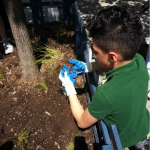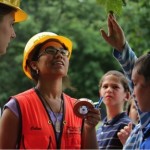
When I started my internship, I hadn’t imagined I would be wading through thickets of chest-high grass and battling prickly plants and biting insects on my field trips to the Bronx. But while it’s been a little more “jungle” in the “urban jungle” than I was expecting, that’s been a pleasant surprise.

Trees in our city are not just there for shade and a place to toss your cigarette butt. There are multiple benefits of urban trees, including improving air quality, decreasing asthma and obesity, reducing stormwater runoff, storing carbon and reducing energy expenditures among countless others.

When most people think of forests, their mind immediately connects to pristine scenes of wilderness with undulating hills and valleys, highly dense tree coverage and wildlife roaming the woods. Street trees, on the other hand, are not quite the same as the ones in national forests, but there’s a growing body of literature espousing their benefits.






